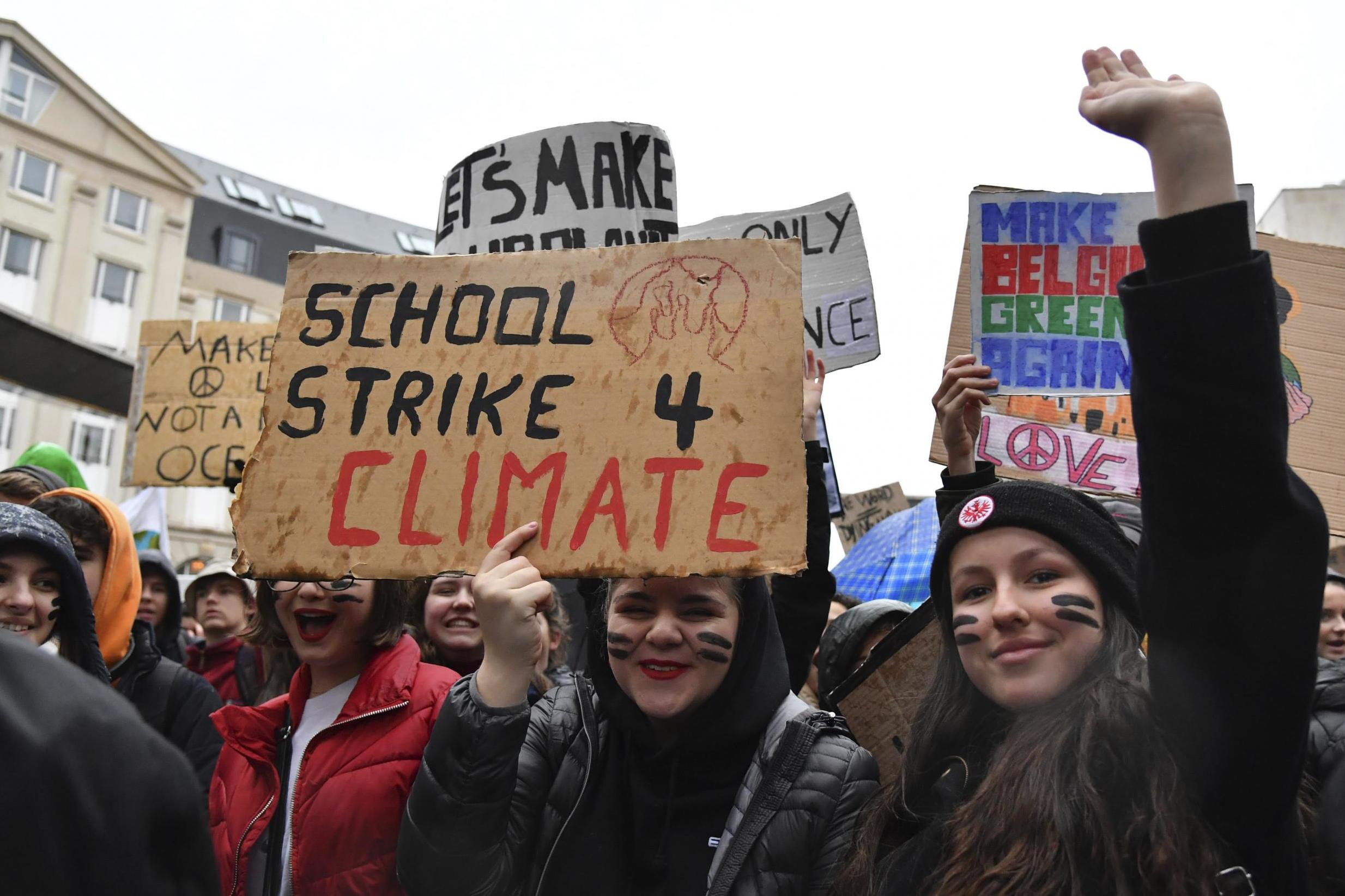
Image from the Independent news site.
As most of us will have seen in the news across all media last week, thousands of school children left the classrooms and went to the streets of main cities in the UK and so did others in many other countries across Europe and other continents, including France, Belgium, Germany, Australia and the USA.
This was the UK’s first Youth Strike 4 Climate event. The protest took place on Friday, when tens of thousands marched through towns and cities across Europe. The young protesters called on adults, especially politicians, to take climate change seriously.
These protests were inspired by the actions of the Swedish school girl, Greta Thunberg, who held a solo protest outside the Swedish parliament in August last year to raise climate change awareness and get governments to act to stop climate change. She has been protesting every Friday and since then some 70,000 schoolchildren each week are following her foot steps and hold protests in over 200 towns and cities worldwide. Greta made a powerfull speech in the UN COP24 last December. She now has 187K followers on Twitter @GretaThunberg.
The Guardian online reported that ”organisers said more than 10,000 young people in at least 60 towns and cities from the Scottish Highlands to Cornwall joined the strike, defying threats of detention to voice their frustration at the older generation’s inaction on the environmental impact of climate change.”
As stated by one of the students taking part, 17-year-old, Anna Taylor “It goes some way to proving that young people aren’t apathetic, we’re passionate, articulate and we’re ready to continue demonstrating the need for urgent and radical climate action.”
Many adults don’t realise that global warming, climate change and many other environmental issues have been included in the UK national curriculum for a while now and school children know a lot more about global warming and climate change than most adults, with the exception of climate experts.
It was estimated that approximately 3000 schoolchildren and young people gathered in London, some 2000 in Oxford and around 1000 each in Exeter and Leeds and 100s more in Brighton, Bristol, Sheffield and Glasgow.
One student from Cumbria who travelled to Manchester to protest told the Guardian “This is our future and this is making a difference. The government has to listen. I feel incredibly powerful just being here.”
They even got the backing from former UN chief, Cristiana Figueres, who said that the fact that children were so worried about their future that they were prepared to strike should make adults sit up and take notice.
Most politicians are too old to have studied environmental issues at school and although they have experts in the civil service to advise them on just about every subject, including climate change, I think they don’t take it seriously enough because they weren’t taught these as children, when you can learn everything without bias or prejudice.
Theresa May said that the children on school strike were ”wasting lesson time” and that’s what Greta Thunberg said in a tweet in reply to Theresa May: ”That may well be the case, But then again, political leaders have wasted 30 years of inaction. And that is slightly worse” with the hash tags #schoolstrike4climate #FridaysForFuture #ClimateStrike
Many people may ask will these strikes make a difference to climate change? I believe they might! Maybe not immediately because let’s face it, most politicians only care about their careers and their political agenda. However, there are political gains to be made from caring for the planet and taking steps toward doing the right thing to reduce carbon emission. Maybe too little too late though!
Being an optimist, I believe the real change will start to happen and make a real difference to the planet when some of these kids that are protesting now become the politicians of the future. From what I have seen, these kids are absolutely serious about protecting the planet and as a former science teacher, I’ve witnessed the interest and passion many young people have for environmental issues, so I do believe in them whole-heartedly!
Link to the Guardian article https://www.theguardian.com/environment/2019/feb/15/uk-climate-change-strike-school-pupils-children-environment-protest







 Yesterday, 16th October 2017, those living in the UK experienced the most amazing unusual sun! I was alerted by a colleague to look outside and I couldn’t believe my eyes when I saw what I described as an apocalyptic red sun in a lighter red sky.
Yesterday, 16th October 2017, those living in the UK experienced the most amazing unusual sun! I was alerted by a colleague to look outside and I couldn’t believe my eyes when I saw what I described as an apocalyptic red sun in a lighter red sky.







